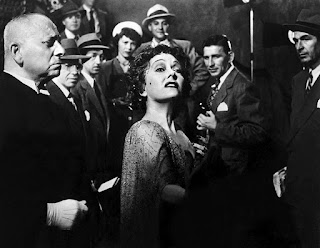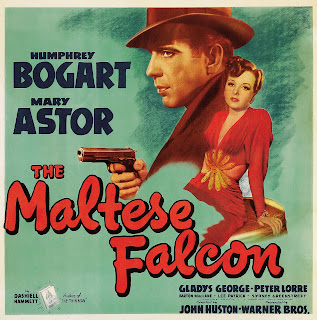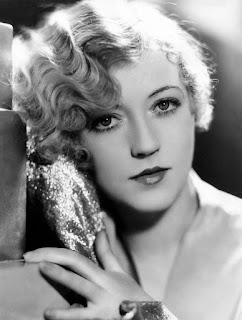So The Oscars- or as I like to call it, My Superbowl- are fast approaching and everyone is busily prognosticating who will win which category. Will Leo finally get his man? Will Jennifer Lawrence win again because she showed up? How many times will people mispronounce Alejandro González Iñárritu's name?
Me? I'm more interested in what happens to the losers. Do they fight back the tears behind a maniacal grin until they get home and break expensive shit? Do they take out voodoo Scientology hits on the winners? Do they heave a sigh of relief knowing that in some categories (Best Actress I'm looking at you) the winners often disappear from the scene, unable to find roles that will top the performance they carted off the award for?
Oscar Losers is a much bigger club- and its members are pretty amazing. So here are my picks for Top Oscar Losers:
Best Picture- Sunset Boulevard (1950)
The Oscars of 1951 was a true clash of the titans with
Sunset Boulevard up against
All About Eve in all but one of the big 6 categories. The Best Actress category was a real Sophie's choice with Gloria Swanson up against Bette Davis and Anne Baxter. The joke was on all three of them when Judy Holliday nabbed the statuette for her fantastically ditsy work in
Born Yesterday.
All About Eve wound up taking Best Picture, Director, and Supporting Actor from
Sunset. but did being the loser in those categories tarnish this great Hollywood classic?
Nope.
Sunset Boulevard has endured as the definitive screen image of film obsolescence. Norma Desmond may be a silent film actress- but she represents all those elements of film that get left behind in the rabid advance of audience trends. She's the black and white film, VHS tape, 80's teen romance, Kodak celluloid, single-screen theater, Faye Dunaway- all those things that were once so much a part of the movies- but are now gone- relics tossed into the dustbin by the digital 3D superhero adventures that appear to replicate endlessly in multiplexes in malls around the country.
Sunset ends with an eternal, gauzy, fade-out of Norma's close-up, and
All About Eve concludes with a shot of the new Eve reflected ad infinitum in a dressing mirror. Both seem to say that film is timeless, forever reaching across the years to speak to us... even if you don't win the Best Picture Oscar.
Best Director- Howard Hawks
Not only did film dialogue innovator Howard Hawks never win a competitive Oscar, but he was only nominated
once! For so-so
Sergeant York (1941)! The man who brought us such wonderfully lively comedies as
Twentieth Century (1934), Bringing Up Baby (1938), His Girl Friday (1940), and
Ball of Fire (1941) wasn't even nominated for any of those great films. And don't start with that old chestnut, "Comedies don't win Oscars." I know they don't. But
It Happened One Night (1934), a comedy that won oodles of Oscars, came out the same year as
Twentieth Century.
And Hawks was so proficient in many different genres: from early gangster flick
Scarface (1932) to romantic dramas
Only Angels Have Wings (1939) and
To Have and Have Not (1944) to film noir
The Big Sleep (1946) to sci-fi horror
The Thing from Another World (1951) (he is uncredited, but it's pretty clear he had something to do with the dialogue) to sensitive western
Red River (1948) to musical comedy
Gentlemen Prefer Blondes (1953). The man could direct anything! Shouldn't that get him an Oscar? The Academy threw him one of those honorary Oscars in 1975, two years before he croaked, but honestly, those honorary Oscars just scream, "We should have given you a real Oscar. Epic fail."
Best Actor- Richard Burton
There are those who say that Richard Burton was the finest actor of his time- and considering that included his most excellent English mates Peter O'Toole and Richard Harris, that is quite a distinction. But Mr. Elizabeth Taylor never won an Oscar despite being nominated seven times. Burton was one of those actors who brought an inborn, thinking-man's masculinity to his screen performances. Stage-trained, Burton used his intense focus and strong voice to project mastery over his scenes and characters. And when it worked best for him was when he was playing someone who was not really in control.
In 1966 Burton starred with his then wife Elizabeth Taylor in first-time film director Mike Nichols' screen adaptation of the Edward Albee play,
Who's Afraid of Virginia Woolf? Much was made of the fact that Liz and Dick were playing a dysfunctional married couple- much like the public imagined their real-life marriage operated (it was super-dysfunctional). And while Taylor often gets more attention for plumping and uglying herself up for the role- Burton is extraordinary as George.
He is alternately powerful and weak and hides and exposes himself as the story of these two sad people unfolds. He hates and loves this woman, and himself, and watching him bring the story to its tragic end- knowing that it is destroying both of them- is devastating. His performance is such that it is hard to imagine anyone else playing the role. But that wasn't enough for the Oscar that year.
Fellow Brit Paul Scofield won for playing Thomas More in another stage-to-screen adaptation,
A Man for All Seasons. Burton got some cinematic revenge three years later when he ordered Thomas More's execution as King Henry VIII in
Anne of a Thousand Days. But he would lose the Oscar for that role to the king of the cowboys, John Wayne for
True Grit. It seems like Dickie just couldn't catch a break.
Best Actress- Judy Garland
There are iconic movie stars and then there is Judy Garland. This sensitive dynamo energized an era and whether she was singing "Over the Rainbow" or "Have Yourself a Merry Little Christmas" or "Come On Get Happy" Garland's voice and screen persona were unforgettable. But Garland fell into a common Hollywood rut. She was not really taken seriously. She was a musical star of great talent and fame- but she wasn't considered to be a serious actress because she danced and sang.
Not true. Aside from her unmistakable pipes, Garland was an expert at interpreting a song. What makes some of her greatest tunes unforgettable is her ability to evoke a pathos in songs that aren't obvious tear-jerkers. The best example of this was Garland's theme song "Over the Rainbow" where a childish tune about rainbows and bluebirds became wish-fulfillment for anyone longing for an escape to a better place. It was Garland's abilities as a song "actress" that made her performances unique.
In 1954, Garland staged a Hollywood comeback by throwing herself heart and soul into George Cukor's
A Star is Born. The story about a young woman's rise to fame in Hollywood all while the husband who discovered her descends into alcoholism was not new. The original film in 1937 starring Janet Gaynor and Frederic March was a hit and the story seemed destined for re-visiting
(its about to be re-visited again helmed by Bradley Cooper). But with Cukor and Garland this version became a musical highlighting the music of Ira Gershwin. Garland had a lot riding on this project. Four years earlier she had been summarily fired from MGM for erratic behavior, and this film would be her return to the silver screen after years of success on the concert circuit.
Watching Garland you get the sense that she is accessing every bit of her personal history to bring Vicki Lester, nee Esther Blodgett to life. Her degrading makeup session to fix what is wrong with her face seems far too close to home for L.B. Mayer's "little hunchback." And her performance of "The Man Who Got Away" not only evokes the sadness of lost love, but the survival mode that accompanies it. This number is a musical foreshadowing of the loss of Esther's husband to suicide- a scene she does beautifully without singing a single word.
From her hospital room where she had delivered her last child, Garland, along with everyone else, heard the Academy Award for Best Actress go to Grace Kelly for
The Country Girl- a movie I've never heard anyone talk about. Judy got a juvenile Oscar in 1940 after
The Wizard of Oz which was basically a studio marketing award- and she was nominated again in 1962 for
Judgment at Nuremberg, but would never win a competitive Oscar- the man who truly got away.
Best Supporting Actor- Claude Rains
Holy cats, Claude Rains was in everything! Looking at the list of movies he made, it's amazing how many good films the English actor appeared in. From his first hit
The Invisible Man (1933) to his final big screen appearance as King Herod in
The Greatest Story Ever Told (1965) Rains brought a fascinating moral complication to both his heroic and dastardly roles. He was nominated for Best Supporting Actor four times:
Mr Smith Goes to Washington (1940), Casablanca (1942), Mr. Skeffington (1944), and
Notorious (1946), but he could have easily been nominated an additional two times for
Now, Voyager (1942) and
Lawrence of Arabia (1962).
Particularly in
Mr. Smith and
Casablanca, his characters meld charm and grace with an untrustworthy quality. We aren't entirely sure Senator Paine or Louis are good guys or not. In
Notorious, we know Mr. Sebastian is a Nazi Spy- but his Old World appeal makes you want to hang out with him- just don't drink the coffee. Rains was always a pleasure to watch because he played with the ambiguity of good and evil rather than the black-and-white of it. It's a shame he was invisible to Oscar voters throughout his career.
Best Supporting Actress- Thelma Ritter
Hattie McDaniels famously said she'd rather get paid to play a maid than to be a maid- and considering how many times character actress extraordinaire Thelma Ritter played a domestic helper, you'd think she might say the same. Ritter started her film career in an uncredited role in the Christmas staple
Miracle on 34th Street (1947), and three years later she was nabbing her first Oscar nomination as Birdie, Margot Channing's sassy dresser/maid/confidante in
All About Eve. In Hitchcock's
Rear Window (1954), she is a chatty massage therapist. In the romantic comedy
Pillow Talk (1959) she is Doris Day's tipsy housekeeper. In the
Misfits (1961) she is a lonely Reno boarding house owner who goes along for the ride with Marilyn Monroe and Clark Gable.
Glamour was not Ritter's thing, With her gravelly voice, and her pointed commentary, she was always the earthy gal on the outside looking in, letting fools know when they were fools. It was a refreshing read that put memorable sparks in the films she appeared in. Ritter was nominated six times for Best Supporting Actress but never made it to the top of the Oscar pile. After her fourth nomination she said, "Now I know what it feels like to be the bridesmaid and never the bride."
Don't worry, Thelma. The Oscar Losers Club is proud to have you.
So those are my Top Oscar Losers. What are yours?



























































